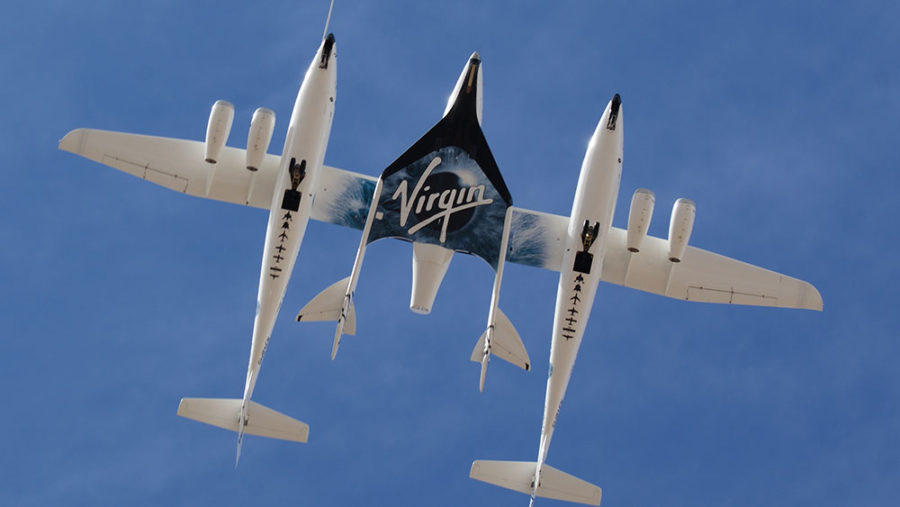Virgin Galactic’s V.S.S. Unity Reaches Space
On Dec 13, VSS Unity rocketed into space over the Mojave Desert, becoming the first spacecraft to reach space from U.S. soil since Space Shuttle Atlantis in 2011
In the morning on Thursday, Dec 13, V.M.S. Eve took off from a New Mexico airport at 7:15 a.m., local time, carrying the SpaceShipTwo spacecraft named “V.S.S. Unity.” V.S.S. Unity was piloted by test pilots Mark “Forger” Stucky and Frederick “CJ” Sturckow. V.M.S. Eve then carried the spacecraft to 43,000 feet.
Once at 43,000 feet, V.M.S. Eve released V.S.S. Unity. Seconds after release, the spacecraft fired its single rocket engine and accelerated upward rapidly. The burn lasted for around 60 seconds. V.S.S. Unity reached a top speed of Mach 2.9 (or 2.9 times the speed of sound) which is around 2,200 miles per hour.
V.S.S. Unity reached a max altitude of 51.4 miles above the earth, earning both test pilots their astronaut wings. Nasa, the Federal Aviation Administration, and the U.S. Air Force considers the 50-mile limit as the definition of space and; therefore, they award astronaut wings to those who make it to that altitude. Both Stucky and Sturckow will be awarded their wings at a ceremony in 2019. However, Sturckow already has his astronaut wings because he is a former Nasa astronaut who flew on a total of four Space Shuttle missions before he joined Virgin Galactic.
When V.S.S. Unity reached space, mission control radioed to the spacecraft, “Unity, Welcome to Space.” Sturckow and Stucky were able to enjoy space only for a few moments till V.S.S. Unity began falling back to Earth.
Since SpaceShipTwo ascended basically vertically into space, the spacecraft started to descend almost vertically as well. First, V.S.S. Unity had to endure a supersonic Mach 2.9 reentry back into Earth’s atmosphere. In order to slow down, both Stucky and Sturckow used the spacecraft’s innovative “feathering” system, which causes the tail of the spacecraft to go vertical just for a short period. Not long after, V.S.S. Unity landed at an airport in the Mojave Desert.
The road to space has been a long and tough one for Virgin Galactic. On Oct 31, 2014, Virgin Galactic’s first SpaceShipTwo, named “V.S.S. Enterprise” had a design mistake which caused test pilot Michael Alsbury to deploy the spacecraft’s “feathering” system too early, which caused a break-up of the vehicle. Tragically, co-pilot Alsbury was killed while pilot Peter Siebold was seriously injured.
Virgin Galactic’s first spaceflight is a major milestone in their quest to make their dream of suborbital space tourism possible. Their plan is to use the same type of spacecraft flown on Dec 13 to fly passengers up to space so that customers can experience five minutes of zero gravity. Virgin Galactic, Blue Origin, and SpaceX all have goals to make space tourism a reality.
This Virgin Galactic spaceflight sets the stage for 2019 when SpaceX will launch their first Dragon 2 spacecraft. The test flight for Dragon 2 is scheduled for launch as SpaceX Demonstration Mission-1 (SpX-DM1) on January 17, 2019.
The first crewed launch of the vehicle will be SpaceX Demonstration Mission-2 (SpX-DM2) which is scheduled for launch in June. SpX-DM2 will be crewed by Nasa astronauts Douglas Hurley and Bob Behnken. Both missions will head to the International Space Station. SpaceX will use their Dragon 2 spacecraft and Boeing will use their Boeing CST-100 Starliner to fulfill contracts from Nasa under the Commercial Crew Program to transport astronauts to and from the International Space Station.
The first Starliner will launch in March of 2019 as an uncrewed test flight. Boeing is scheduled to launch their first crewed CST-100 Starliner in August as the Boeing Crew Flight Test (Boe-CFT). 2019 will be a busy year for spaceflight.


